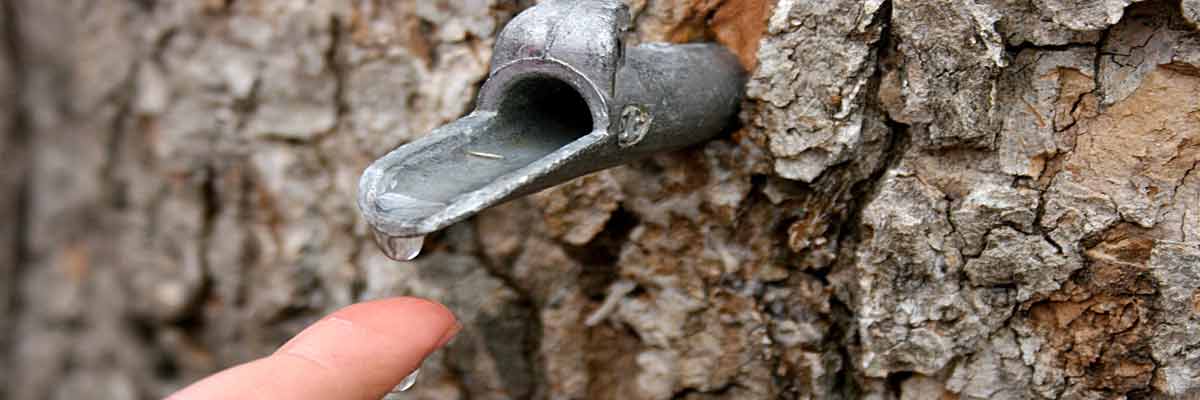Tapping Your Maple Trees – Start Preparing Now!
Do your children think that food comes from the supermarket or maybe the shop at the gas station? We all have opportunities to open that door to the past and learn to rely on nature to provide for our dietary needs. If we give her a chance, it is amazing how willing Mother Nature is to sustain our needs. One green (and fun) opportunity to utilize nature is to tap your maple trees to collect the sap. Now that is really tapping into Mother Nature!
I started tapping maple trees in my yard several years ago and constantly get questions about how to do this. The reality is that with the right equipment and a little direction, it is quite simple. The trick is to be prepared when the sap starts to flow (sometime in February or March depending upon weather conditions).
Being prepared means identifying your maple trees (Sugar, Black, Red, and Silver Maples will all yield an impressive amount of sap) and having the right equipment. Now is the ideal time to solve for both of these, as it is easy to identify maples when the leaves are on your trees and equipment is available (supplies can become limited once the sap is flowing and everyone is looking for equipment).
The most common use of maple sap is to produce maple syrup. In fact, sap is the lone ingredient of syrup, and is produced by boiling water off the sap until it turns into syrup. This is generally done outside (can be done on a gas grill or a small make-shift fire pit with support for a pan / pot) as a large amount of steam will be generated. It takes roughly 10 gallons of sap to produce 1 quart of syrup. It is a lot of boiling, but the results are well worth the effort. You can throw away that store bought “Pancake Syrup” full of high fructose corn syrup. There are many other uses of sap, such as use in recipes that call for water (for a slightly sweet, maple flavor).
Tapping your maple trees is environmentally sustainable year after year. Tapping a healthy, mature (at least 12 inches in diameter) maple does create a “wound” in the tree, but this wound does not endanger the health of the tree. Commercial operators are able to tap trees (some with 3 or 4 taps) for decades. A vigorous tree will heal, or grow over, a tap hole in one year. It may take other trees up to 3 years to grow over a tap hole. Here is an example of a tap hole after one year of recovery:
Collecting maple sap is fun, green, and healthy. It is a great way to teach kids (and yourself) about how nature provides for us.
If you are interested in tapping a few trees in the yard, take a look at www.TapMyTrees.com. This site offers a starter kit, with all the equipment you need and a guide providing straight forward instruction on how to identify your maple trees, tap them, and process the sap.
Live green and love nature.
About the Author
Joe McHale is the founder of Tap My Trees LLC, dedicated to promoting maple sap collection and use at home. Tapping maple trees is fun and available to all. With access to the right equipment and knowledge, this miracle of nature can be used teach our children about nature and that our dietary needs can be met in a green, environmentally sustainable manner. Visit www.TapMyTrees.com or send Joe an email at info@tapmytrees.com.






